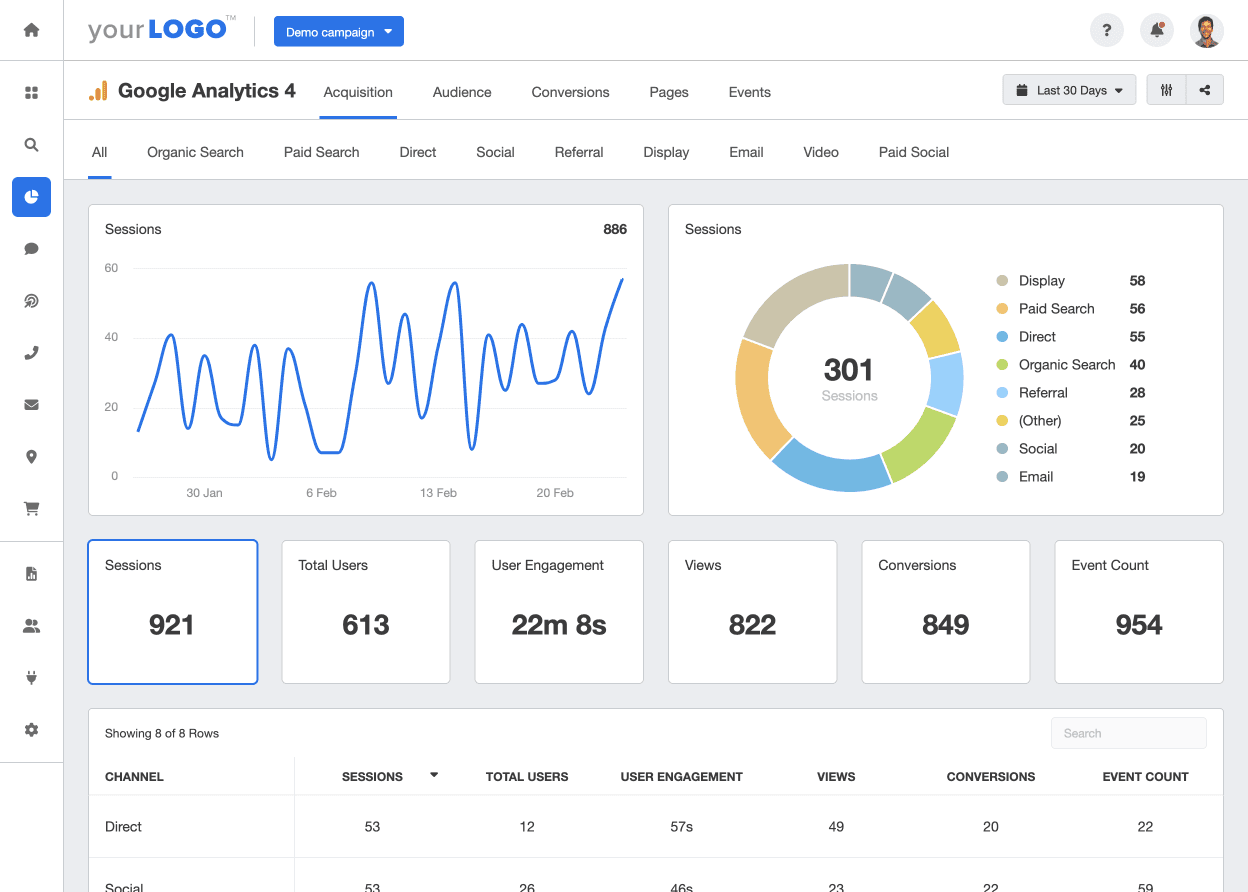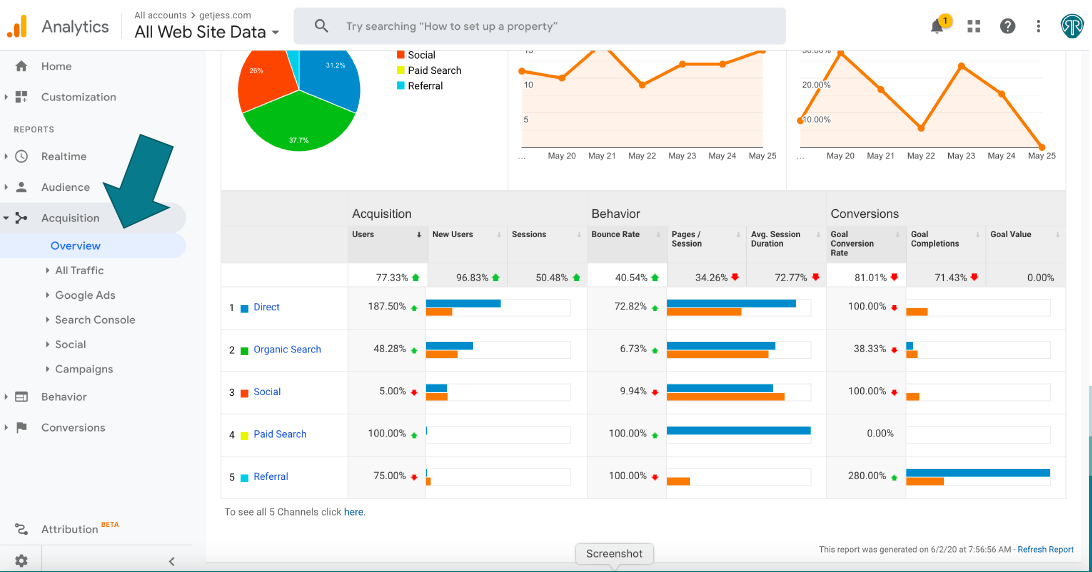Learn the Trick Activates for When Does the Google Analytics Tracking Code Send an Event Hit to Analytics
Learn the Trick Activates for When Does the Google Analytics Tracking Code Send an Event Hit to Analytics
Blog Article
Enhance Your Website Efficiency With Google Analytics Tracking Code
In the digital landscape, recognizing customer interactions with your internet site is critical for optimization. By incorporating the Google Analytics tracking code, you can unlock a wide range of information pertaining to visitor actions, enabling you to keep an eye on important metrics and recognize potential locations for enhancement. This calculated implementation not just informs your decisions yet likewise leads the means for a much more engaging individual experience. However, the actual challenge hinges on properly examining this data and converting insights into actionable approaches. What steps can you require to guarantee you are fully leveraging these insights for optimum performance?
Understanding Google Analytics
Comprehending Google Analytics is crucial for internet site proprietors and marketing experts intending to optimize their on the internet presence. This powerful tool provides vital understandings into user behavior, allowing stakeholders to make data-driven decisions. By tracking different metrics, such as web page sights, bounce prices, and customer demographics, Google Analytics aids determine which facets of an internet site are executing well and which call for renovation.
One of the key attributes of Google Analytics is its capacity to segment data. Customers can assess web traffic sources, user engagement, and conversion prices across various sections, such as geographic locations or tool types. This granularity enables marketing professionals to customize their techniques to specific target markets, thus improving the performance of their campaigns.

Setting Up Monitoring Code
To harness the complete potential of Google Analytics, establishing the monitoring code properly is a fundamental action. The tracking code, a bit of JavaScript, allows Google Analytics to collect information regarding customer interactions on your site. To begin, visit to your Google Analytics account and navigate to the Admin area. Under the Residential property column, choose "Monitoring Details" and afterwards "Tracking Code." Right here, you will certainly find your unique monitoring ID, which begins with "UA-" adhered to by a series of numbers.
Following, you'll require to embed this code right into the HTML of your site. Preferably, position the tracking code right before the closing tag on every web page you wish to keep track of. If you're using a content administration system (CMS) like WordPress, take into consideration using plugins that promote simple assimilation.
After applying the code, it's essential to validate its functionality. Utilize the "Real-Time" reports in Google Analytics to verify that information is being accumulated as anticipated. By making sure correct setup, you produce a solid foundation for effective data analysis and tactical decision-making to improve your internet site's efficiency.
Trick Metrics to Display
Routinely have a peek at this site keeping an eye on key metrics in Google Analytics is important for evaluating your site's performance and individual engagement. Among the essential metrics to track are page views, which offer insight into exactly how typically individuals go to different pages on your site. Additionally, unique visitors aid you recognize the reach of your web content by suggesting exactly how numerous distinct customers are engaging with your website over an offered duration.
Bounce rate is an additional important metric, exposing the percentage of site visitors who leave your website after checking out just one web page. A high bounce price may signify concerns with content relevance or customer experience. On the other hand, session duration suggests the length of time site visitors remain on your website, aiding you determine web content effectiveness and user passion.
Conversion rates are vital for gauging the success of your site in achieving certain goals, such as form submissions or item purchases (when does the google analytics tracking code send an event hit to analytics?). Keeping an eye on web traffic sources is additionally crucial, as it assists identify which networks drive the most traffic and conversions, permitting for more targeted advertising and marketing techniques
Studying Visitor Actions

Furthermore, tracking customer pathways via the site aids disclose common navigating patterns. This info is crucial in a fantastic read identifying whether customers can quickly discover the material they seek or if they experience barriers that result in irritation. Identifying high exit pages can highlight locations that may need redesign or even more engaging material to maintain site visitors.
In addition, segmenting customers based upon demographics, rate of interests, and behavior provides a much deeper understanding of the target audience. This segmentation enables companies to tailor web content and marketing strategies better, boosting the probability of conversions. Eventually, assessing visitor behavior not only educates web site improvements but also cultivates a more user-centric approach, causing enhanced satisfaction and commitment in time.
Executing Data-Driven Modifications
Implementing data-driven modifications is essential for improving internet site performance and attaining business objectives. By leveraging insights collected from Google Analytics, companies can identify locations for improvement and make educated choices to optimize user experience.
First, analyze key efficiency signs (KPIs) such as bounce prices, session duration, and conversion rates to determine specific problems impacting individual interaction - when does the google analytics tracking code send an event hit to analytics?. For example, a high bounce rate on a landing web page may show that the material is not reverberating with site visitors or that the web page takes also long to load

Verdict
In verdict, the application of Google Analytics tracking code click for source is essential for enhancing internet site efficiency. By accurately checking individual actions and key metrics, important insights can be gotten, facilitating data-driven decision-making.
By tracking various metrics, such as page sights, bounce rates, and user demographics, Google Analytics helps recognize which facets of an internet site are executing well and which call for renovation.
Individuals can evaluate web traffic resources, customer interaction, and conversion rates across various sectors, such as geographical locations or device kinds. The tracking code, a bit of JavaScript, makes it possible for Google Analytics to collect information regarding customer interactions on your website.Consistently checking crucial metrics in Google Analytics is necessary for evaluating your internet site's performance and customer engagement. By leveraging Google Analytics, web site proprietors can acquire important understandings right into how individuals engage with their website.
Report this page